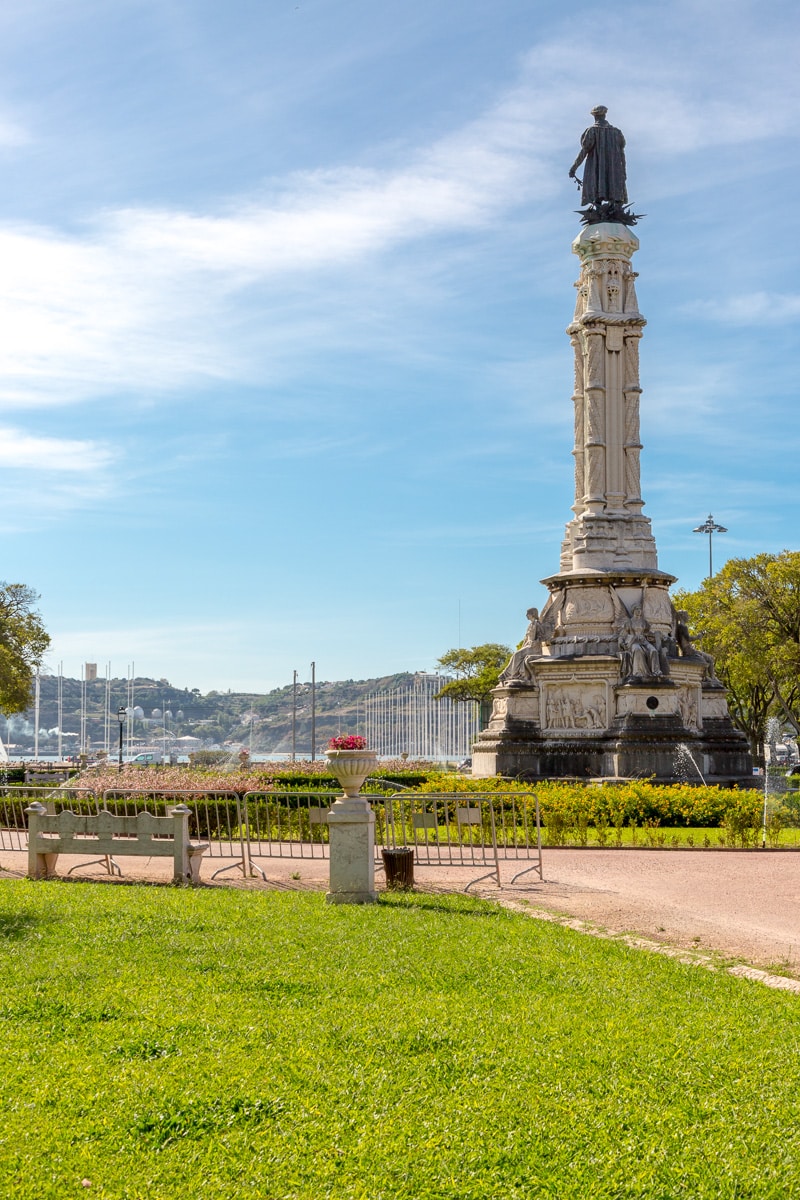 October 2019 – Located at the mouth of the River Tagus, Belém is Lisbon’s southwesternmost district. Far from the city center, but easily accessible, Belem was originally the location of Lisbon’s shipyards and docks. This was the starting point for the voyages that discovered the sea routes to India, East Africa, and Brazil, thus beginning the Portuguese Age of Discovery or Age of Exploration during the 15th and 16th centuries.
October 2019 – Located at the mouth of the River Tagus, Belém is Lisbon’s southwesternmost district. Far from the city center, but easily accessible, Belem was originally the location of Lisbon’s shipyards and docks. This was the starting point for the voyages that discovered the sea routes to India, East Africa, and Brazil, thus beginning the Portuguese Age of Discovery or Age of Exploration during the 15th and 16th centuries.
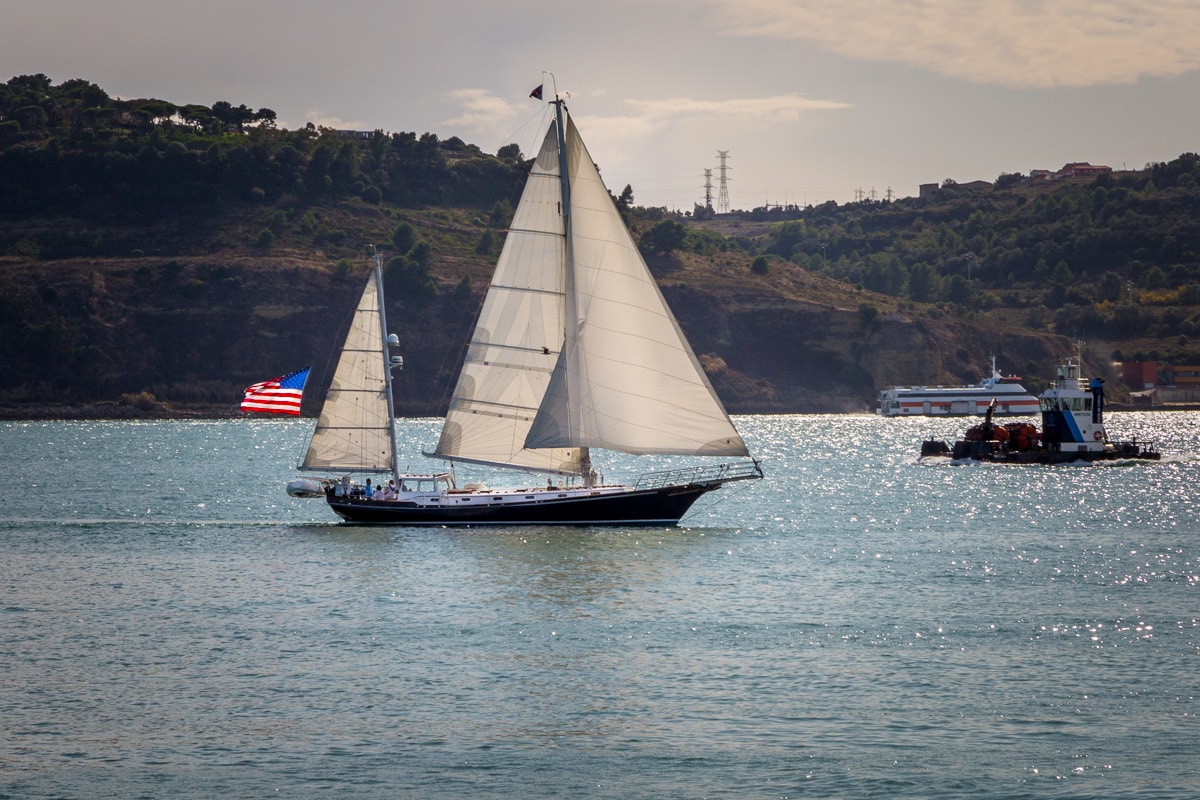 We made several trips out to Belém after first walking about ten minutes from our apartment, followed by a 20-30 min bus ride.
We made several trips out to Belém after first walking about ten minutes from our apartment, followed by a 20-30 min bus ride.
There are many things to see in Belém. It is home to some incredibly famous landmarks, such as the Mosteiro dos Jerónimos (Jerónimos Monastery) and the Torre de Belém (Belém Tower) both from 1500s, the Padrão dos Descobrimentos (Monument to the Discoveries), the Ponte 25 de Abril and the Palácio Nacional de Belém – Belém National Palace, as well as museums and a number of scenic gardens and parks.
Mosteiro dos Jerónimos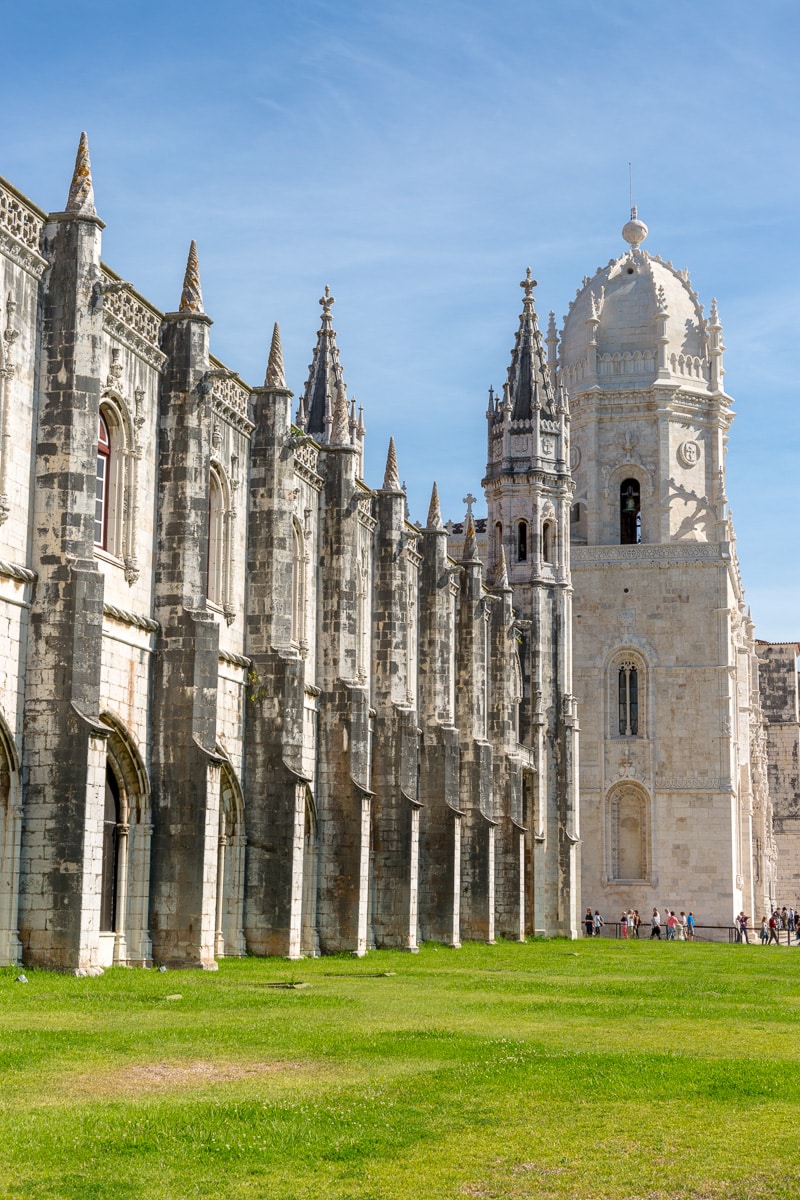
The Mosteiro dos Jerónimos (Jeronimo’s Monastery) was commissioned by King Manuel I to boast of Vasco da Gama’s discovery of a sea route to India in 1498. Manuel I also selected monks of the Order of St Jerome, to provide spiritual assistance to sailors and pray for the king’s soul which they diligently did for four centuries. After the order was dissolved in 1833, the monastery was used as a school and orphanage until about 1940. In 1983, The Mosteiro dos Jerónimos was classified, along with the nearby Tower of Belém, as a UNESCO World Heritage Site.
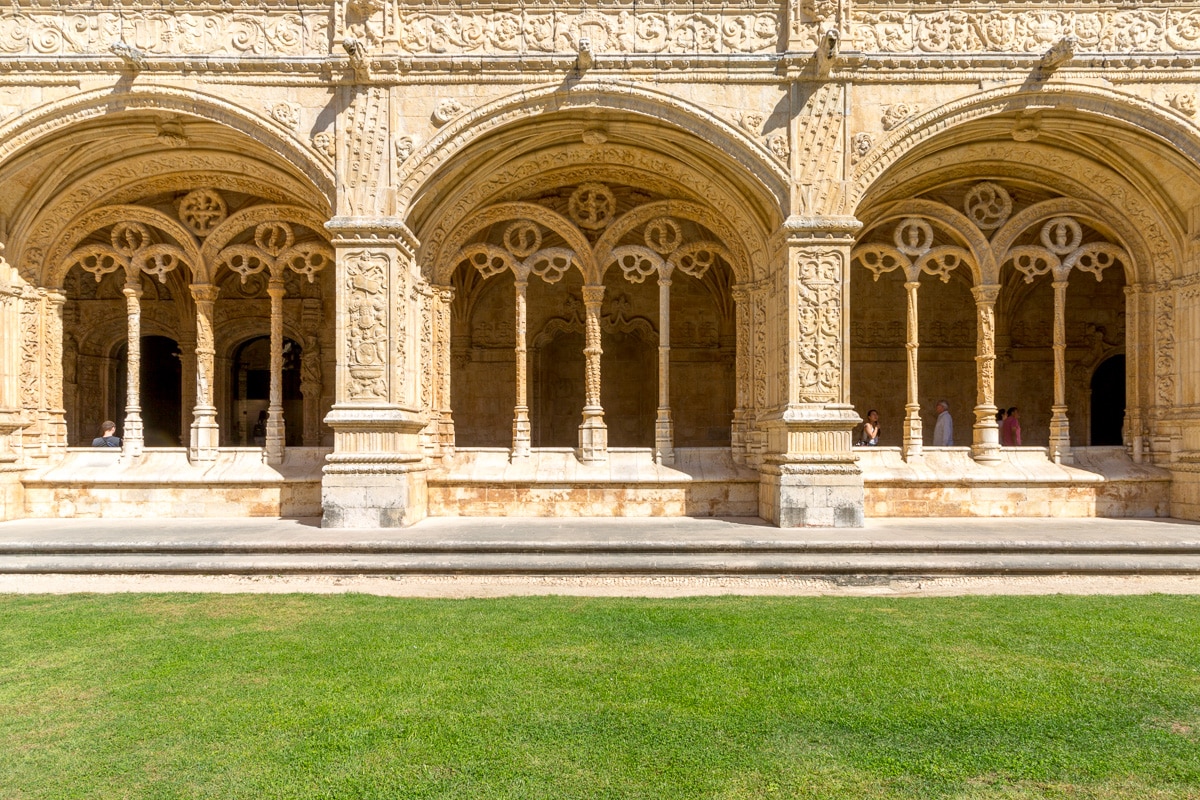 The monastery is an excellent example of Manueline architectural style. This uniquely Portuguese style of architectural ornamentation is particularly rich and lavish, and dates to the early 16th century. It derives from Gothic, Moorish and Renaissance styles with nautical themes in homage to the Age of Discoveries. When one examines the exuberantly decorated monastery, cloister, and church, it’s obvious why this structure took over a century to complete.
The monastery is an excellent example of Manueline architectural style. This uniquely Portuguese style of architectural ornamentation is particularly rich and lavish, and dates to the early 16th century. It derives from Gothic, Moorish and Renaissance styles with nautical themes in homage to the Age of Discoveries. When one examines the exuberantly decorated monastery, cloister, and church, it’s obvious why this structure took over a century to complete.
Fully engaged in the successes of their explorers and navigators, Portugal’s expanding empire began sending back extravagant amounts of wealth. This great prosperity allowed the Portuguese to introduce the world to exotic spices, gems, and precious metals from distant civilizations, as well as many skilled foreign artisans who came to work in Portugal. Indeed it was the wealth and cultural encounters that gave the Manueline style its distinctive character.
Today, one invention of the monks of the Mosteiro dos Jerónimos rises above all their other accomplishments, the famous Portuguese pastel de nata. In the past, convents and monasteries would 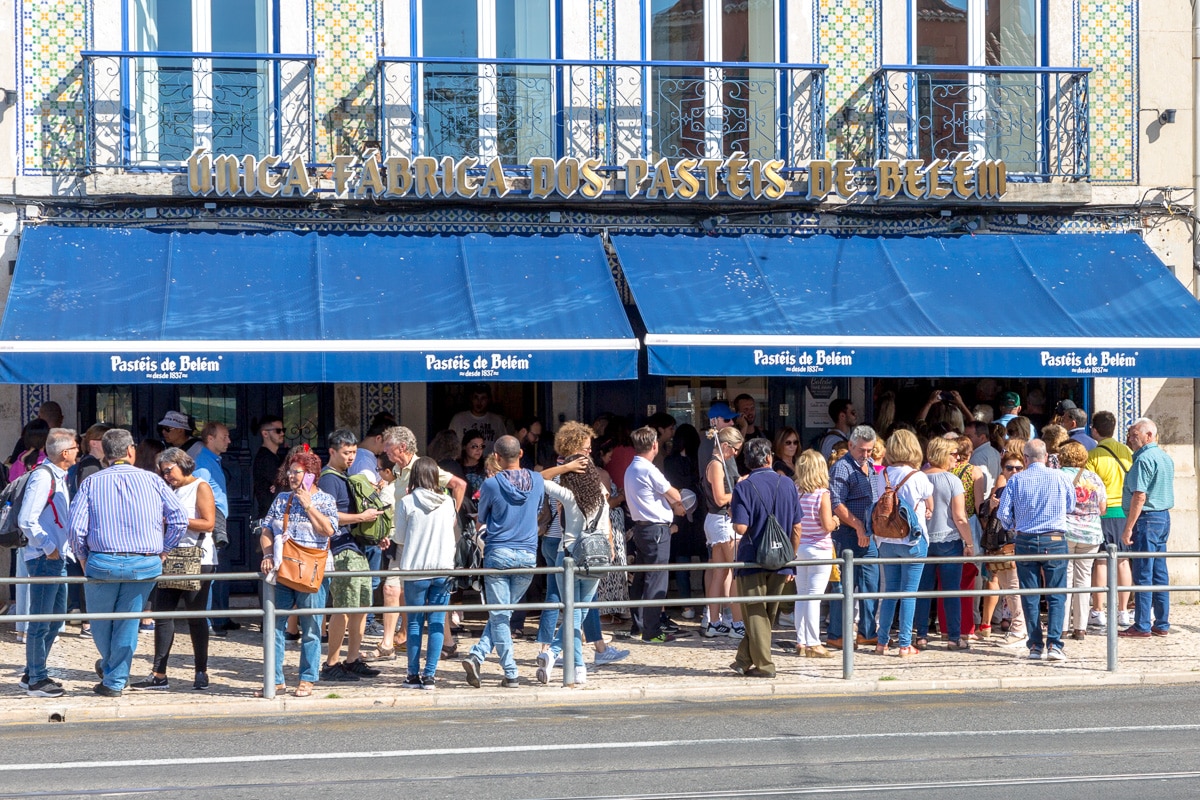 use large quantities of egg-whites to starch clothes, such as the nuns’ habits. They used the leftover egg yolks to make cakes and pastries, resulting in an abundance of sweet pastries throughout the country. The pastel de nata is by far the most famous and widely eaten in all of Portugal. There is always a long line at Pastéis de Belém where they make and sell about 20,000 pastries every day. Oh, and the natas cost about 1 Euro ($1.10), and they are ALL made individually by hand.
use large quantities of egg-whites to starch clothes, such as the nuns’ habits. They used the leftover egg yolks to make cakes and pastries, resulting in an abundance of sweet pastries throughout the country. The pastel de nata is by far the most famous and widely eaten in all of Portugal. There is always a long line at Pastéis de Belém where they make and sell about 20,000 pastries every day. Oh, and the natas cost about 1 Euro ($1.10), and they are ALL made individually by hand.
Torre de Belém
Just a little further west, the Torre de Belém (Belém Tower) was constructed to serve a military function along the Tagus River on a basaltic rock outcrop a short distance from the riverbank. The Manueline style seems rather ornate for a fortification that would be expected to be the target of many attacks and occupations over the centuries.
Palácio Nacional de Belém
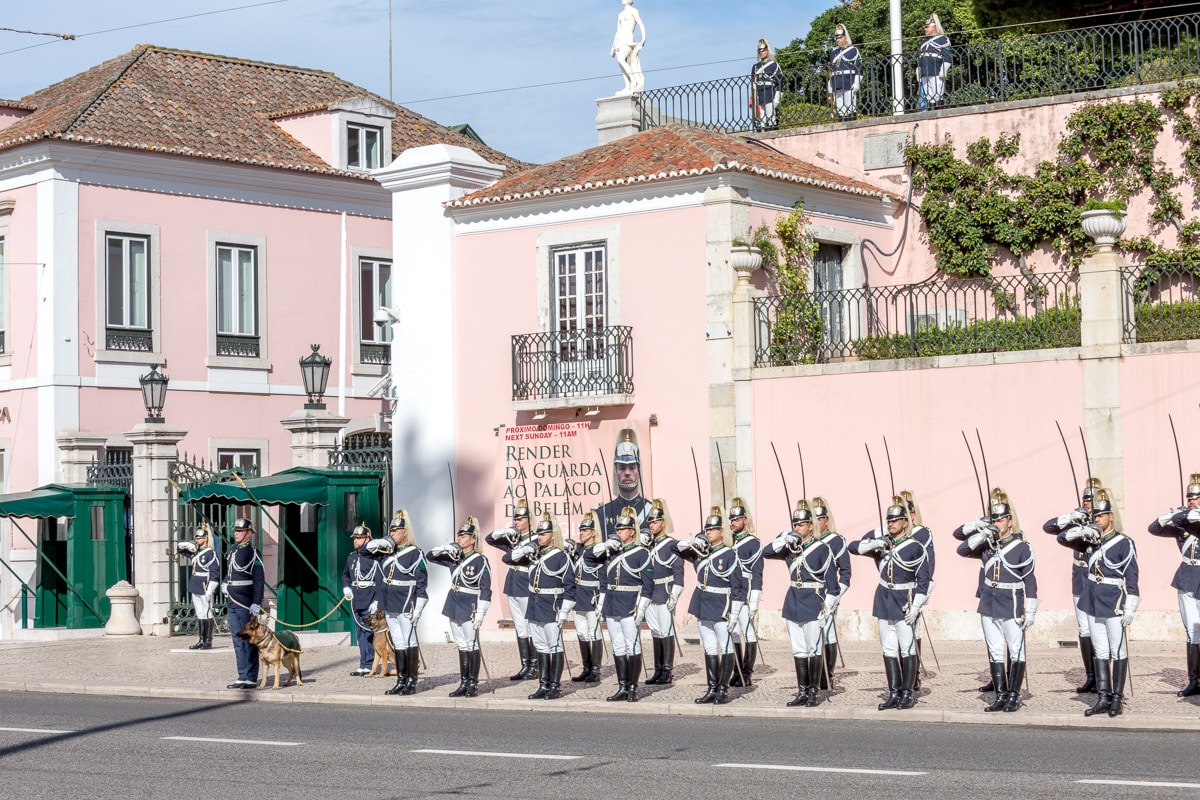 Palácio Nacional de Belém or Belém National Palace was built in 1559 and altered in the 18th century by King João V. It is open for tours only on Saturdays, so sadly we never made it, but we were aware of something else special that we could be present at.
Palácio Nacional de Belém or Belém National Palace was built in 1559 and altered in the 18th century by King João V. It is open for tours only on Saturdays, so sadly we never made it, but we were aware of something else special that we could be present at.
Once a month, on the third Sunday, at 11am, outside of the Belém National Palace, the Changing of the Guard, a military ceremony of great tradition and symbolism, is carried out.
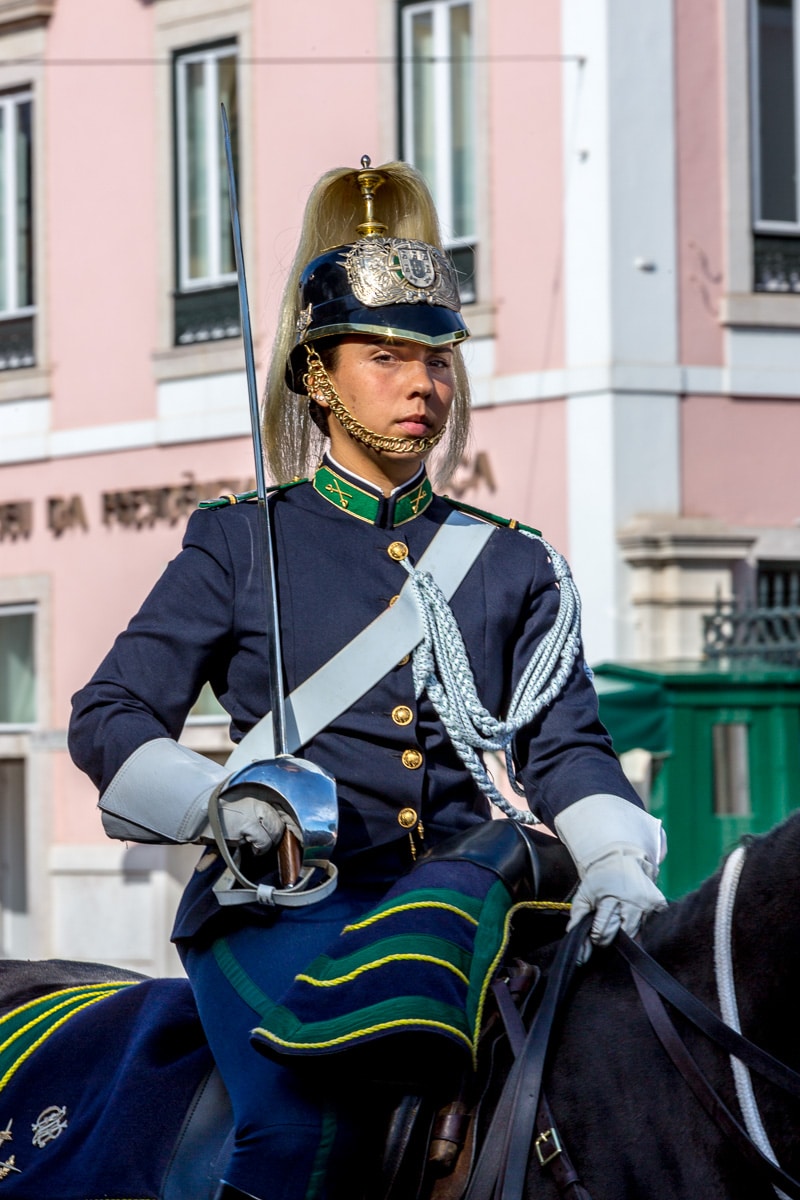 The Presidential Squadron of the Security and State Honors Unit or Palace Guard, has full responsibility for the Changing of the Guard ceremony. These are the military members that provide security for the Palace and afford military honors to the Portuguese President, Ambassadors and other heads of State that visit Portugal.
The Presidential Squadron of the Security and State Honors Unit or Palace Guard, has full responsibility for the Changing of the Guard ceremony. These are the military members that provide security for the Palace and afford military honors to the Portuguese President, Ambassadors and other heads of State that visit Portugal.
The Guards were joined by the Martial Band and Fanfare, the Mounted Platoon that escorts the bearer of the code-words, the Mounted Brass Band, and even the K-9 guards who also participate.
My brother Mike and his wife Kathy were with us for a few days and joined us for the day in Belém for the Changing of the Guard. It was a morning filled with grandeur and ceremony.
 But the show wasn’t over. As we were walking away from the Palace area where the Changing of the Guard occurred, we came to a large park where the Mounted Brass Band performed some more and allowed the public to admire their mounts close-up. These steeds are all decked out, including specific ornaments, braided manes and a chess-pattern drawn in their rumps, a traditional cavalry symbol.
But the show wasn’t over. As we were walking away from the Palace area where the Changing of the Guard occurred, we came to a large park where the Mounted Brass Band performed some more and allowed the public to admire their mounts close-up. These steeds are all decked out, including specific ornaments, braided manes and a chess-pattern drawn in their rumps, a traditional cavalry symbol.
The musicians can play with only one hand, leaving the other free to hold the reins, and are able to perform while in canter, a rare feat in the world of mounted brass bands. Oh, and the first piece they played? “Crazy Train” by Ozzy Osbourne.
Padrão dos Descobrimentos
T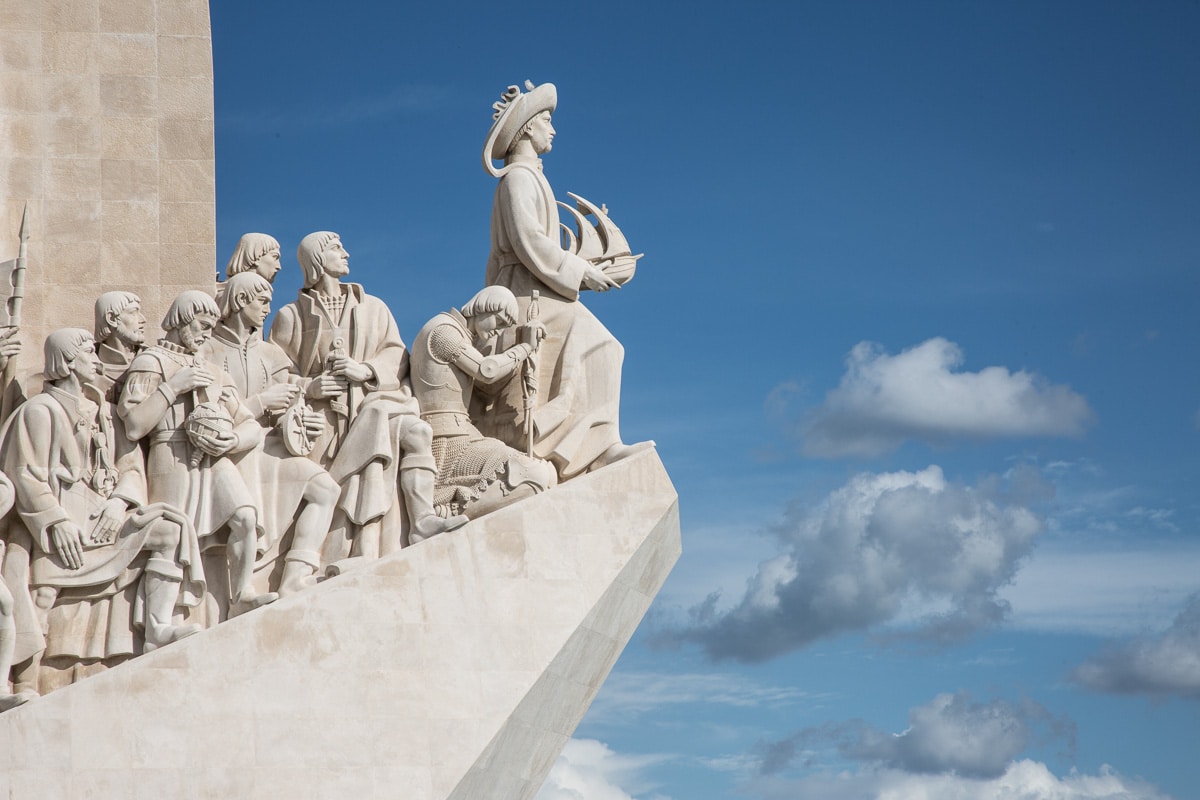 he Padrão dos Descobrimentos or Monument to the Discoveries, celebrates the Portuguese Age of Discovery or Age of Exploration during the 15th and 16th centuries. This gleaming white stone monument was built on the north bank of the Tagus River in 1960 for the 500th anniversary of the death of Portugal’s Prince Henry the Navigator and to symbolize Portugal’s role during the Age of Discoveries.
he Padrão dos Descobrimentos or Monument to the Discoveries, celebrates the Portuguese Age of Discovery or Age of Exploration during the 15th and 16th centuries. This gleaming white stone monument was built on the north bank of the Tagus River in 1960 for the 500th anniversary of the death of Portugal’s Prince Henry the Navigator and to symbolize Portugal’s role during the Age of Discoveries.
 The monument is 52 m (170 ft) high and is composed of concrete and stone built to resemble the bow of a ship heading towards the sea on the Tagus River. There are 32 different statues on both sides of the monument representing Portugal’s most influential figures associated with the voyages of discovery. Explorers, cartographers, artists, scientists, missionaries and members of the royal family, all follow a statue of Prince Henry the Navigator standing at the front looking out over the Tagus River.
The monument is 52 m (170 ft) high and is composed of concrete and stone built to resemble the bow of a ship heading towards the sea on the Tagus River. There are 32 different statues on both sides of the monument representing Portugal’s most influential figures associated with the voyages of discovery. Explorers, cartographers, artists, scientists, missionaries and members of the royal family, all follow a statue of Prince Henry the Navigator standing at the front looking out over the Tagus River.
Belém, too easy to get to and too important to miss, we visited on several occasions, and still didn’t see everything. The SlowNomads blog will return to go looking for art.
All images from above in one gallery:

Wayne
8 Mar 2020Makes me smile as always!
Chris
8 Mar 2020THAT is the reason we keep putting out this blog. That, and the fact that someday when we get really old and forgetful we’ll look at the blog and say, “Oh look, didn’t those people have a wonderful adventure, I wonder who they were?” Thanks Wayne, your comments and smiles are always appreciated.
Cathi
7 Mar 2020Street art always beckons me to come closer. 3D version is incredible!
Danny Allen
5 Mar 2020Awesome Pics! As usual.
Lem Howard
4 Mar 2020Terribly disappointed there were no scratch and sniff photos of the “pastel de nata.”
Linda
4 Mar 2020Wow so much history. The monastery architecture is really awesome. All the monuments are amazing. Really like the raccoon art.
Missy Ortega
4 Mar 2020Really impressive how the Mounted Brass Band played their instruments, with only one hand, while in a canter. Those horses are as beautiful as the Lipazanns.
Alice Mathias
4 Mar 2020The more you travel and write, the smarter I get!
Patricia Grunder
4 Mar 2020We loved Lisbon! Your photos have just taken me back. They are beautiful. Hope you both are well.
Pat